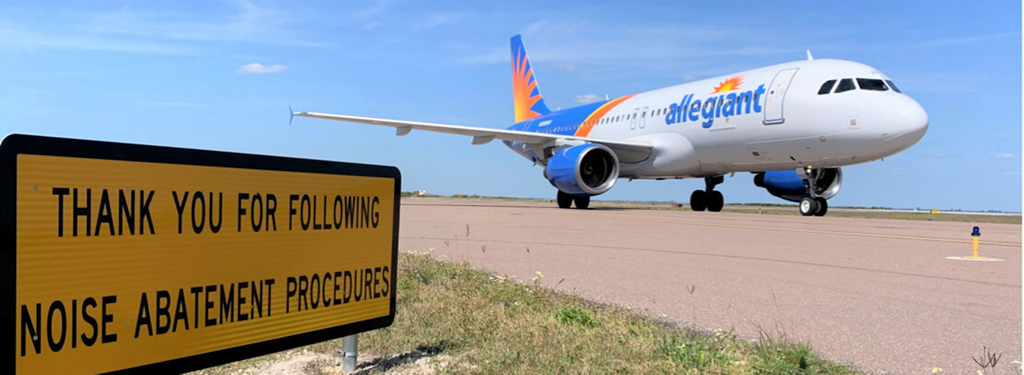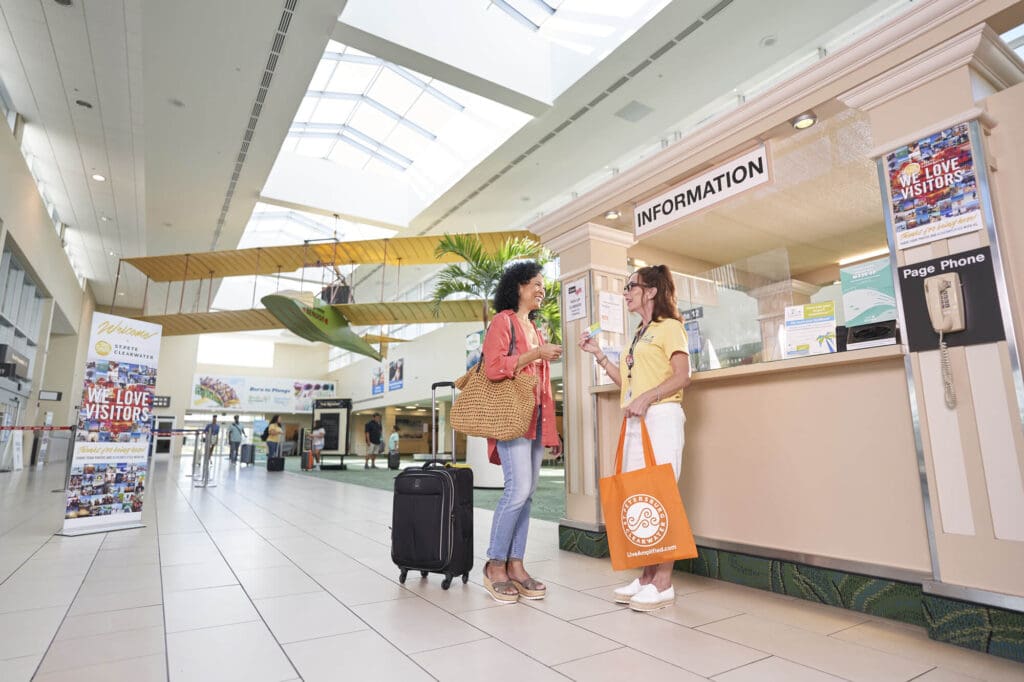Welcome to Noise Affairs. St. Pete-Clearwater International (PIE) is committed to educate and minimize the effects and exposure of aircraft noise to the extent possible within the guidelines of the Federal Aviation Administration.
To file a Noise Complaint, click https://fs30.formsite.com/Pinellas8/psdvxhderj/index
For additional information concerning noise affairs, contact the Noise Affairs Office at (727) 453-7877 or airportnoise@fly2pie.com.
Track flights at PIE
St. Pete-Clearwater International suggests using the following free Flight Tracking System that allows you to independently watch the movement of flights and air traffic patterns within the Tampa Bay region.
Flight Radar 24: https://www.flightradar24.com/27.88,-82.80/6
Flight View: https://www.flightview.com/
Flight Aware: Clearwater Intl Airport Overview and FBOs (St Petersburg-Clearwater, FL) [KPIE/PIE] – FlightAware
National Airspace System Status: https://nasstatus.faa.gov/map
If you can’t find a particular flight, you can e-mail or call with the date, time, address or approximate location of the flight, and a representative will respond back with the information you requested within 24 hours.
Noise Abatement Working Group (NAWG)
The Noise Abatement Working Group is made up of representatives from government officials, a mix of aviation industry representatives, and local citizens. The goals are to educate the community on traffic patterns, flight routes and arrival /departure procedures, and to explore methods of reducing aircraft noise and impacts on residential neighborhoods surrounding the airport.
Noise reports are posted quarterly, and meetings are held semi-annually with reports submitted to the Board of County Commissioners. Current reports, along with the minutes taken at meetings this past year, are available for review below.
For questions about the NAWG or for information on how to contact your local representative, please call or email the Noise Affairs Office at (727) 453-7877, airportnoise@fly2pie.com.
NAWG Meetings
All meetings are open to the public.
2025 Schedule:
Time: 3:00 PM (EST)
- Wednesday, July 30, 2025
Place:
St. Pete-Clearwater Int’l Airport, Airport Conference Room #234,
14700 Terminal Blvd., Clearwater
NAWG Quarterly Noise Data
To view the Quarterly Noise Data, select the Quarter you wish to view.
NAWG Minutes /Semi-Annual Reports
To view the Meeting Minutes, select the date of the report you wish to view. For Meeting Minutes/ Semi-Annual reports from earlier years, please contact airportnoise@fly2pie.com. Reports will be provided at no charge.
Noise Abatement Procedures
Arrival Procedures
Runway 18/36 – when in use and weather permits, aircraft arriving are strongly encouraged to utilize the established noise abatement procedures.
Voluntary Quiet Hours
To the extent practical, the airport requests air carriers avoid scheduling flights during the Airport’s “Voluntary Quiet Window” between the hours of 11:00 p.m. and 6:00 a.m. local time daily.
The following operations are strongly discouraged between the hours of 11:00 p.m. – 6:00 a.m. local time daily, unless otherwise pre-approved by the Airport Director or his representative:
- “Touch-and-go” takeoffs and landings
- Practice instrument approaches
- Engine ground run-ups for routine maintenance purposes
General Aviation
The Noise Affairs Office has created a Noise Abatement Procedures brochure for General Aviation and Corporate pilots. An electronic copy may be found here or a hard copy may be picked up at the airport’s Fixed Based Operators.
Frequently Asked Questions
Noise Complaint Information
All information provided will be used solely in the investigation and documentation of the noise event and in the development of new noise abatement and mitigation measures.
Reports are investigated by Airport Operations personnel. A response may be requested via email or telephone. In most cases, a response will be provided within five (5) business days of complaint submission. Please report only one event per submission. If you are reporting multiple events, please submit a separate form for each event.
Please note: All noise complaint submissions become public record and subject to the Public Records Law of Florida.


